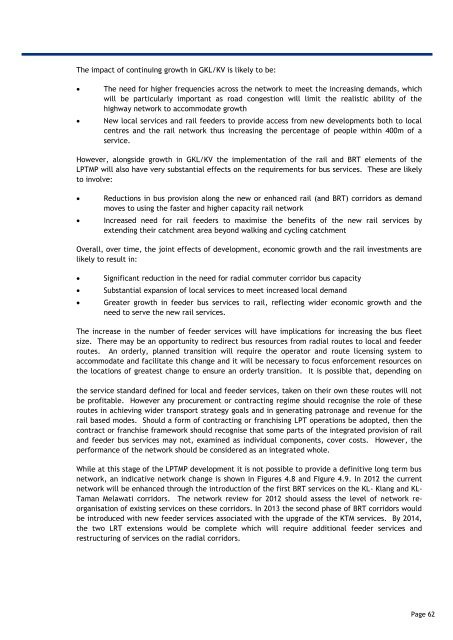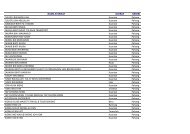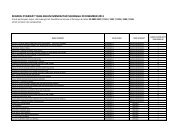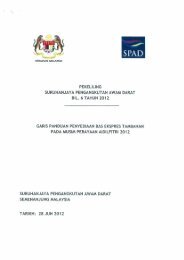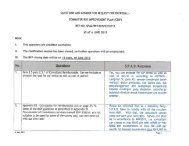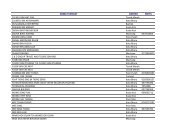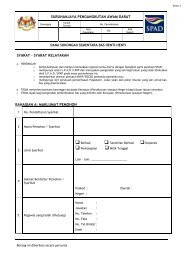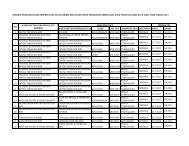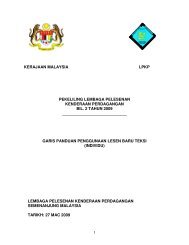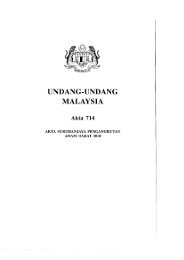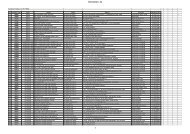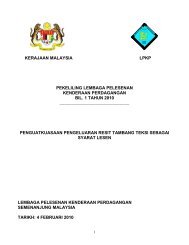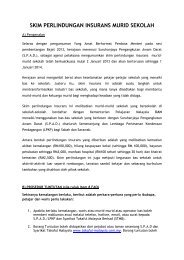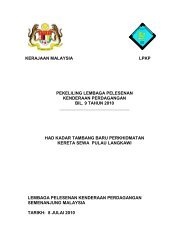Contents - SPAD
Contents - SPAD
Contents - SPAD
Create successful ePaper yourself
Turn your PDF publications into a flip-book with our unique Google optimized e-Paper software.
The impact of continuing growth in GKL/KV is likely to be:<br />
<br />
<br />
The need for higher frequencies across the network to meet the increasing demands, which<br />
will be particularly important as road congestion will limit the realistic ability of the<br />
highway network to accommodate growth<br />
New local services and rail feeders to provide access from new developments both to local<br />
centres and the rail network thus increasing the percentage of people within 400m of a<br />
service.<br />
However, alongside growth in GKL/KV the implementation of the rail and BRT elements of the<br />
LPTMP will also have very substantial effects on the requirements for bus services. These are likely<br />
to involve:<br />
<br />
<br />
Reductions in bus provision along the new or enhanced rail (and BRT) corridors as demand<br />
moves to using the faster and higher capacity rail network<br />
Increased need for rail feeders to maximise the benefits of the new rail services by<br />
extending their catchment area beyond walking and cycling catchment<br />
Overall, over time, the joint effects of development, economic growth and the rail investments are<br />
likely to result in:<br />
<br />
<br />
<br />
Significant reduction in the need for radial commuter corridor bus capacity<br />
Substantial expansion of local services to meet increased local demand<br />
Greater growth in feeder bus services to rail, reflecting wider economic growth and the<br />
need to serve the new rail services.<br />
The increase in the number of feeder services will have implications for increasing the bus fleet<br />
size. There may be an opportunity to redirect bus resources from radial routes to local and feeder<br />
routes. An orderly, planned transition will require the operator and route licensing system to<br />
accommodate and facilitate this change and it will be necessary to focus enforcement resources on<br />
the locations of greatest change to ensure an orderly transition. It is possible that, depending on<br />
the service standard defined for local and feeder services, taken on their own these routes will not<br />
be profitable. However any procurement or contracting regime should recognise the role of these<br />
routes in achieving wider transport strategy goals and in generating patronage and revenue for the<br />
rail based modes. Should a form of contracting or franchising LPT operations be adopted, then the<br />
contract or franchise framework should recognise that some parts of the integrated provision of rail<br />
and feeder bus services may not, examined as individual components, cover costs. However, the<br />
performance of the network should be considered as an integrated whole.<br />
While at this stage of the LPTMP development it is not possible to provide a definitive long term bus<br />
network, an indicative network change is shown in Figures 4.8 and Figure 4.9. In 2012 the current<br />
network will be enhanced through the introduction of the first BRT services on the KL- Klang and KL-<br />
Taman Melawati corridors. The network review for 2012 should assess the level of network reorganisation<br />
of existing services on these corridors. In 2013 the second phase of BRT corridors would<br />
be introduced with new feeder services associated with the upgrade of the KTM services. By 2014,<br />
the two LRT extensions would be complete which will require additional feeder services and<br />
restructuring of services on the radial corridors.<br />
Page 62


